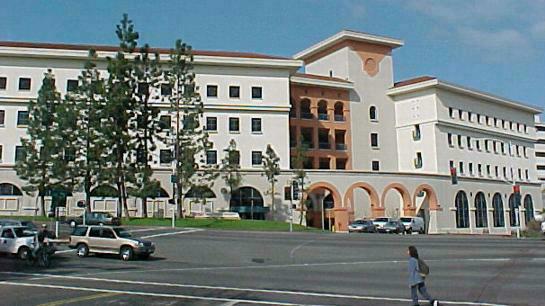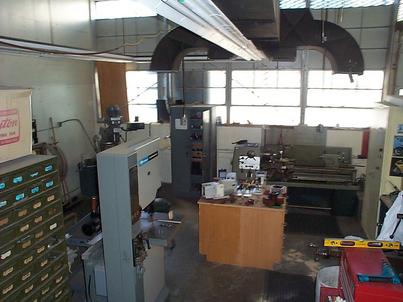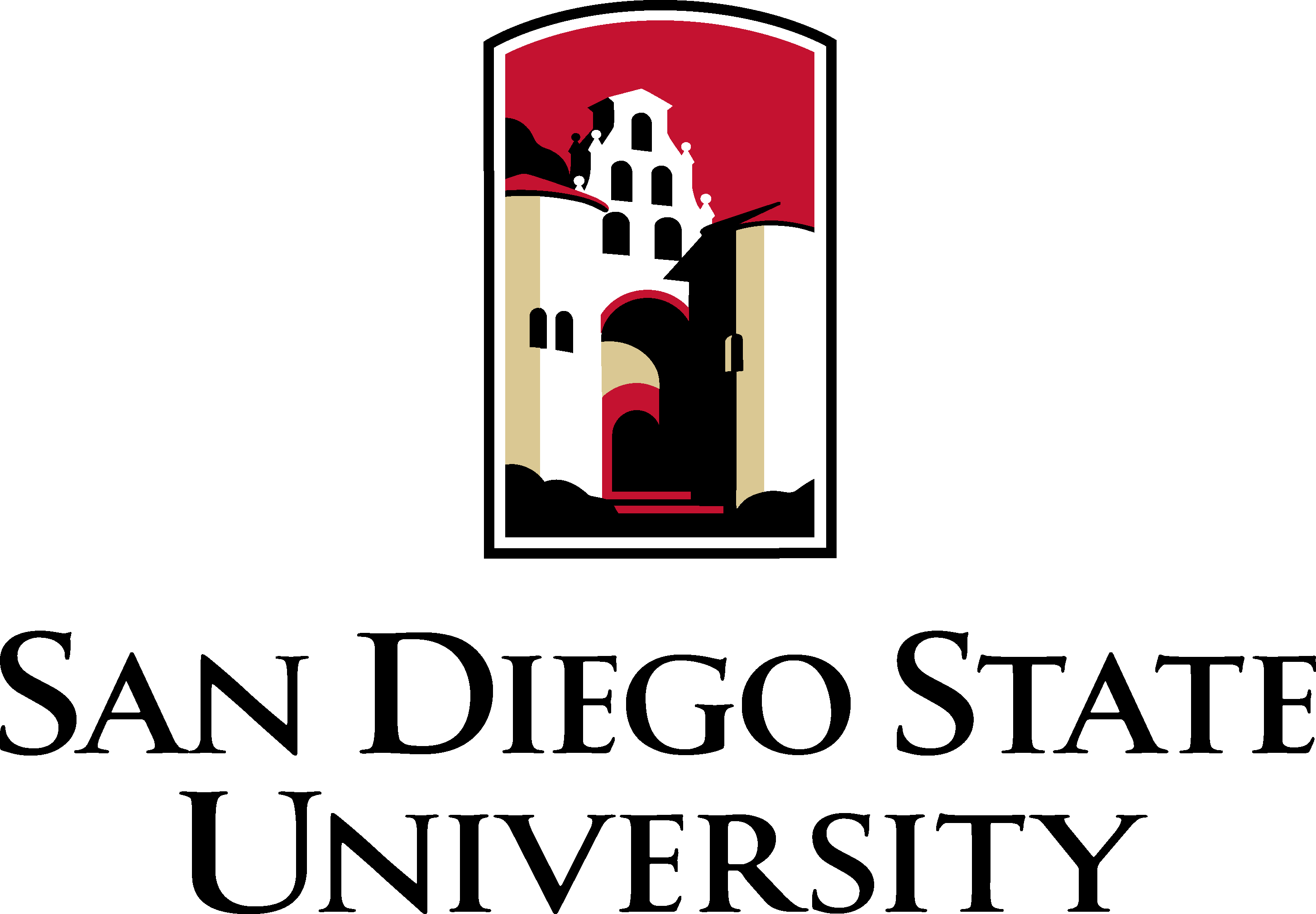
The CSL Building provides more than 40,000 sq. ft. of state-of-the-art laboratory and office space.

Professor Carl Carrano and the Bruker X8 APEX diffractometer.

students working on Macromolecular diffractometer.
(photo credit: Anna Quezada)

The Department of Chemistry and Biochemistry is located in the new Chemical Sciences Laboratory Building (CSL) on the northeast corner of campus.
Facilities in the Department
- An NMR Facility with 3 spectrometers (600 MHz, 500 MHz, 400 MHz),
supervised by
SDSU » Chemistry & Biochemistry » Facilities David Onofrei- Two state-of-the-art X-Ray Diffractometers
- A Mass Spec Facility
- A dedicated Machine Shop in the nearby GMCS building
- Numerous additional instruments
SDSU Chemistry NMR Facility
For extended details on the NMR Facility, please visit the Facility website.
The Department of Chemistry and Biochemistry has three Nuclear Magnetic Resonance (NMR) spectrometers:
- Bruker Avance IIIHD 600 MHz spectrometer, installed in 2015, and generally dedicated to solid-state NMR studies as well as advanced biomolecular solution NMR experiments;
- Varian INOVA 500 MHz, allocated for routine and advanced solution NMR experiments requiring longer data acquisition, including 1D spectra on dilute samples, variable-temperature, kinetics studies, diffusion measurements, routine and advanced 2D experiments, etc.;
- Varian VNMRS 400 MHz, installed in Fall 2006, the workhorse machine for all synthetic chemists in the department, equipped with a sample changer for overnight use.
A complement of probes provides the ability to observe the resonances of 1H, 19F and all nuclei with resonance frequencies between 31P and 15N. These probes can perform all modern one- and multi-dimensional experiments that are essential for chemical research. All of the spectrometers are capable of indirect detection and are equipped with pulsed-field gradients. The 500 and 400 MHz spectrometers have automated dual broadband probes (1H-19F/15N-31P) that can be automatically tuned for any nucleus in these ranges and for any solvent. The Bruker 600 and Inova 500 MHz spectrometers have three channel (1H/13C/15N) probes. The 500 MHz spectrometer has a probe for triple or quadruple resonance work, capable of simultaneous or single irradiation of 13C, 15N, and 31P frequencies. All probes have variable temperature capability.
Solid-state NMR capabilities are available on the 600 MHz Bruker AVIIIHD spectrometer. Currently there are three available probes, including a 4 mm HX double resonance MAS probe, a 3.2 mm HCN triple resonance MAS probe, and a 1.9 mm Fast Spinning probe.
In addition to meeting the educational and research needs of the university, the NMR facility provides analytical services for industry and other educational institutions. Bennett Addison is the full-time administrator of this equipment.
SDSU Chemistry X-Ray Diffractometer
The Department is well-equipped for both small molecule and macromolecular structure determinations.
Small molecule work is carried out on a Bruker X8 APEX X-Ray Diffractometer, featuring
- Bruker's highest sensitivity (170 electrons/Mo photon) CCD detector and an extremely fast readout rate (0.3 sec at 5122 resolution),
- a short beam path for high intensity,
- the Kappa goniostat geometry,
- comprehensive control and structure determination software.
This diffractometer is housed in the Chemical Sciences Laboratory Building, and serves the structure determination needs of the numerous groups in organic and organometallic synthesis in the Department.
The SDSU Department of Chemistry & Biochemistry Macromolecular X-ray Crystallography Facility consists of the following:
- Rigaku RU-H3R 18 kW rotating-anode x-ray generator,
- R-Axis IV++ image plate detector,
- Osmic Blue x-ray optics system,
- Oxford Cryosystems 700 Series Cryostream cryostat,
- Inverse phi sample mounting goniometer,
SDSU Chemistry Mass Spec Facility
This lab houses several GC- and two HPLC-mass spectrometric systems, available for highly precise quantitative and qualitative analysis of complex samples. Among other projects, these systems are presently engaged in a long-term study of effects of tobacco smoke in association with the SDSU School of Public Health.
SDSU Chemistry Machine Shop
The Department of Chemistry and Biochemistry Machine Shop occupies about 400 sq. feet of space and is equipped with a mill, a 13-inch lathe, 2 drill presses, 22-inch bandsaw, horixontal bandsaw, and numerous grinders and sanders. An extensive metal stock is available.
Other Instruments
The Department of Chemistry and Biochemistry at SDSU provides a substantial inventory of modern chemical instrumentation in support of teaching and research. Included are systems for the performance of nearly all major types of chemical separations; several GC- and two HPLC-mass spectrometric systems; two FT infrared spectrometers; ultraviolet-visible spectrometric instruments for both atomic and molecular emission and absorption studies; electrochemical instrumentation for potentiometric, voltammetric and coulometric measurements; radiochemical instrumentation; and laser systems for spectroscopy. Several groups have inert-atmosphere gloveboxes for conducting research on air- and moisture-sensitive compounds.
The departmental computer lab has 25 personal computers (Mac and PC) for general use, and numerous research-grade computers are housed in individual laboratories. Access is also available to accounts at the San Diego Supercomputer Center.
In-house support staff include full-time NMR, analytical instrument, and electronics technicians as well as a shop technician for machining, plastic working, welding, and other fabrications needs.
